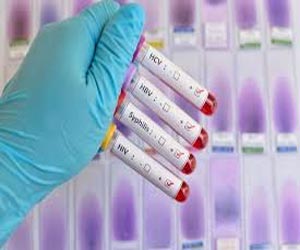- Home
- Editorial
- News
- Practice Guidelines
- Anesthesiology Guidelines
- Cancer Guidelines
- Cardiac Sciences Guidelines
- Critical Care Guidelines
- Dentistry Guidelines
- Dermatology Guidelines
- Diabetes and Endo Guidelines
- Diagnostics Guidelines
- ENT Guidelines
- Featured Practice Guidelines
- Gastroenterology Guidelines
- Geriatrics Guidelines
- Medicine Guidelines
- Nephrology Guidelines
- Neurosciences Guidelines
- Obs and Gynae Guidelines
- Ophthalmology Guidelines
- Orthopaedics Guidelines
- Paediatrics Guidelines
- Psychiatry Guidelines
- Pulmonology Guidelines
- Radiology Guidelines
- Surgery Guidelines
- Urology Guidelines
Congenital syphilis causes 2 lakh stillbirths and newborn deaths every year: WHO

There is a global decrease but cases of Congenital syphilis remain high and are causing 200 000 stillbirths and newborn deaths every year.
Congenital syphilis is the second leading cause of preventable stillbirth globally, preceded only by malaria.The data suggests that there were more than half a million (around 661,000) total cases of congenital syphilis in 2016, resulting in over 200,000 stillbirths and neonatal deaths. Congenital syphilis can also cause low birth weight, prematurity, and other congenital deformities and is often fatal.
Co-authored by WHO and HRP with partners, and published in the scientific journal PLOS ONE, the new estimates show that out of the 661,000 total cases of congenital syphilis, there were 355,000 adverse birth outcomes – which represents a significant proportion of newborn death and disease.
Syphilis is one of the most common sexually transmitted infections globally, with approximately 6 million new cases each year. If a pregnant woman who is infected does not receive early and effective treatment, she can then transmit the infection to her unborn infant.
Congenital syphilis is easily preventable and treatable – as long as testing and treatment are provided to pregnant women early during antenatal care. The risk of adverse outcomes to the fetus is minimal if a pregnant woman, infected with syphilis, receives testing and adequate treatment with benzathine penicillin, early in pregnancy – ideally before the second trimester.
New estimates
The estimates showed that the overall global burden of congenital syphilis decreased over the 2012 to 2016 research period, although non-significantly, from around 750,000 to 660,000 cases. The research also found some improvements in screening, treatment, and surveillance of maternal syphilis. Estimated adverse birth outcomes due to congenital syphilis decreased slightly from 397,000 to 355,000.
Action needed now
Despite the decrease between 2012 and 2016, the numbers of affected women and infants remains unacceptably high. It is crucial that all women are provided with early syphilis screening and treatment as part of high-quality antenatal care for a positive experience of pregnancy.
In addition, health systems and programmes need to ensure that all women diagnosed with syphilis, as well as their infants, are effectively treated and that their sexual partners are reached for testing and treatment. Countries can also work to reduce syphilis prevalence across populations, by ensuring that testing, treatment and partner referral for the infection are put into action, beyond that of antenatal care.
The importance of syphilis surveillance towards the goal of congenital syphilis elimination
WHO is working towards the goal of eliminating mother-to-child transmission of syphilis, and success has already been made in several parts of the world. In recent years 12 countries have been validated by WHO as having eliminated mother-to-child transmission of syphilis and/or HIV.
Monitoring the scale-up of screening and treatment of pregnant women remains paramount to measure progress towards this goal. Measuring how many adults and infants are affected by syphilis with regional and national-level estimation is crucial to guide health systems’ capacity to strengthen the prevention, detection, and treatment of syphilis.

Disclaimer: This site is primarily intended for healthcare professionals. Any content/information on this website does not replace the advice of medical and/or health professionals and should not be construed as medical/diagnostic advice/endorsement or prescription. Use of this site is subject to our terms of use, privacy policy, advertisement policy. © 2020 Minerva Medical Treatment Pvt Ltd